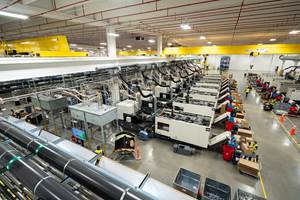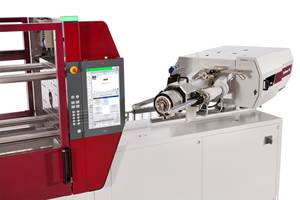China Is Ready for Value-Added Molding
A number of U.S. injection molders are establishing Chinese joint ventures and satellite molding plants to take advantage of the huge market opportunities there and to defend against the perceived threat of low-cost competition.
A number of U.S. injection molders are establishing Chinese joint ventures and satellite molding plants to take advantage of the huge market opportunities there and to defend against the perceived threat of low-cost competition. Some of these processors believe that relatively simple processes and technologies are the only ones suitable to be exported to China.
But that's not the philosophy of United Plastics Group (UPG) Inc., a custom injection molder of automotive, medical, electronics, and consumer parts. For UPG, manufacturing in China doesn't mean leaving technically sophisticated, value-added processes and services at home. "If you are not adding value to the customer in some way, it doesn't matter where the process is located," says William Featherstone, senior v.p. of sales and marketing at UPG headquarters in Oak Brook, Ill.
Featherstone defines "value-added" as not just high-tech automated pro-cesses, but also production of high-precision products at low cost and providing close customer service on a local level. UPG will embody this philosophy in a $10-million, 100,000-sq-ft, full-service custom manufacturing facility set to open next month in Suzhou, China.
The plant, UPG's largest, will be located in the Suzhou Industrial Park free-trade zone, about 50 miles from Shanghai. It is set up to promote international trade and exempts from taxes goods imported into the zone and exported from the zone. This will allow UPG to buy raw materials and sell finished goods at lower cost from within the zone than from its other plants, and they will be able to deliver the goods to the customer faster, saving time and shipping or inventory costs. Products manufactured at the plant will serve U.S.- and European-based multi-national companies, as well as its new and growing Asian customers.
The company produces auto interior and under-hood parts, Class 2 to Class 3 medical devices, and housings for cell phones, PDAs, and power tools. UPG also performs EMI shielding and painting for electronics and computers.
Sharing technologies
UPG already has 10 plants in four countries, operating 300 injection presses ranging from 7 to 1000 tons. It has six plants in the U.S., one each in Mexico and England, and two existing plants in the Suzhou free-trade zone. The last two are a tooling facility and a molding plant, both opened in Suzhou three years ago "as a way to dip a toe into China and learn how to do business there," says Featherstone. The "modest" 23,000-sq-ft molding plant has 20 presses and a class 100,000 clean room.
"The new Suzhou plant can accommodate 50 to 60 injection presses, and there will also be a separate area for assembly," says Featherstone. It will also mark the first time that several of UPG's most advanced processes can be performed under one roof, including two-shot molding, micro-molding, clean-room molding, precision gear molding, and assembly. Other high-end capabilities—such as microcellular foam molding, engineering and design services, tool repair and maintenance, and painting—may be set up there, too. "We will study where we need to bring our technology and how to translate it to work elsewhere. We are looking to export processes developed at one plant to other plants, where they can bring value to a customer," Featherstone explains. Experienced technicians from UPG's U.S. operations will go to China to train personnel there.
This approach toward plant capabilities represents a recent diversification effort by UPG. Four or five years ago, the company's production was more than 70% for the electronic industry while consumer, medical, and automotive products comprised the remaining 30%. UPG's output is more uniformly distributed today, with electronics assuming less than 50% of its current sales.
Related Content
Injection Compression Molding as Alternative to Thermoforming
Arburg will show its all-electric Allrounder 720 A press utilizing injection compression molding to create thin-wall IML cups from PP.
Read More50 Years of Headlines … Almost
I was lucky to get an early look at many of the past half-century’s exciting developments in plastics. Here’s a selection.
Read MoreIPEX Opens Injection Molding Facility in North Carolina
The pipe and fittings manufacturer’s new 200,000-square-foot facility represents a $200 million investment and will create 150 jobs.
Read MoreFakuma 2023: More Details on New Machine Line
Wittmann Battenfeld has released more details on the new EcoPower B8X debuting at Fakuma (October 17-21; Friedrichshafen, Germany), which it previously announced.
Read MoreRead Next
How Polymer Melts in Single-Screw Extruders
Understanding how polymer melts in a single-screw extruder could help you optimize your screw design to eliminate defect-causing solid polymer fragments.
Read MoreUnderstanding Melting in Single-Screw Extruders
You can better visualize the melting process by “flipping” the observation point so that the barrel appears to be turning clockwise around a stationary screw.
Read MoreWhy (and What) You Need to Dry
Other than polyolefins, almost every other polymer exhibits some level of polarity and therefore can absorb a certain amount of moisture from the atmosphere. Here’s a look at some of these materials, and what needs to be done to dry them.
Read More

























